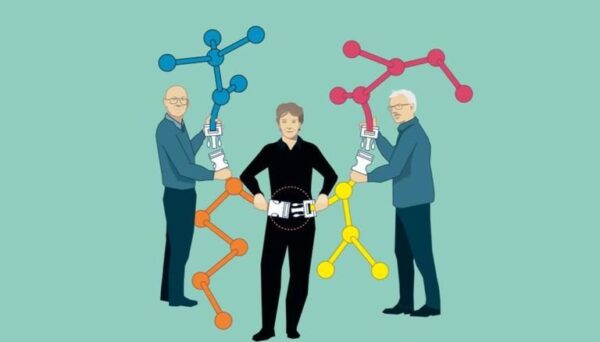
Building decreasingly complicated motes is a desire that drives numerous druggists. But, for this time’s chemistry Nobel Prize, the Nobel Committee chose the prize for a miracle that works to make delicate processes easier. The Click Chemistry that won Morten Meldal, Barry Sharpless, and Carolyn Bertozzi this time’s Nobel Prize in Chemistry is each about making huge chemical responses simple.
The topmost benefit to humanity is the morning of the period of functionalism for chemistry and the click chemistry and bioorthogonal responses, which do without snooping with the normal functioning of the cell, have propelled that period.
Barry Sharpless of Scripps Research in the United States and Morten Meldal of the University of Copenhagen in Denmark laid the root for a functional form of chemistry in which molecular structure blocks snap together snappily and efficiently while Carolyn Bertozzi of Stanford University expanded on this Click Chemistry and began using it in living organisms.
This time’s Prize in Chemistry deals with not overcomplicating matters, rather working with what’s easy and simple. Functional motes can be erected indeed by taking a straightforward route,” said Johan Aqvist, Chair of the Nobel Committee for Chemistry.
This is the alternate chemistry Nobel for Barry Sharpless who took the lead in this design and started the ball rolling.He chased the conception of Click Chemistry around 2000. It was a form of simple and dependable chemistry where responses are quick without unwanted by- products.Latterly, Meldal and Sharpless( independent of each other) handed the crown of the Click Chemistry- the bobby
Azide is an N3 organic emulsion, whereas an alkyne is a hydrocarbon with at least one carbon- carbon triadic bond. This simple and effective chemical response is now extensively used in the development of medicines, mapping DNA, and creating accoutrements that are more fit for purpose, among numerous other effects.
Bertozzi elevated Click Chemistry to new heights. She developed click responses that work inside living organisms to collude important but fugitive biomolecules on the face of cells called glycans.
These responses are now used all over the world to probe cells and track natural processes. Experimenters have bettered the targeting of cancer medicines using bioorthogonal responses, which are now being tested in clinical trials.









